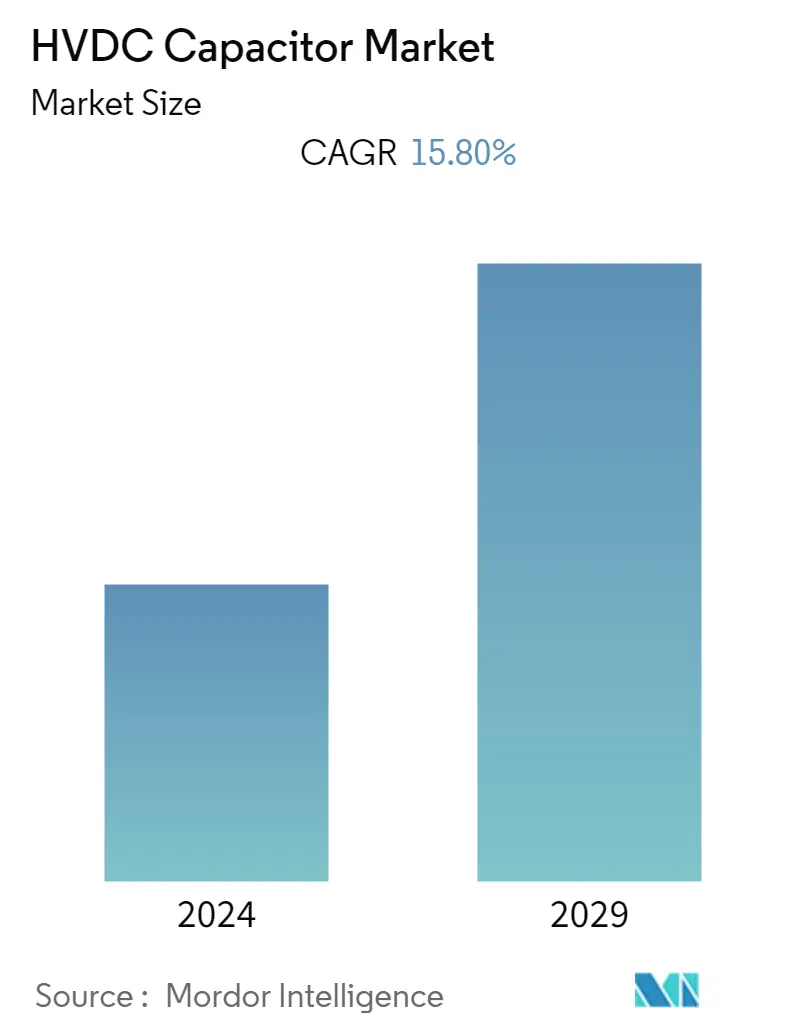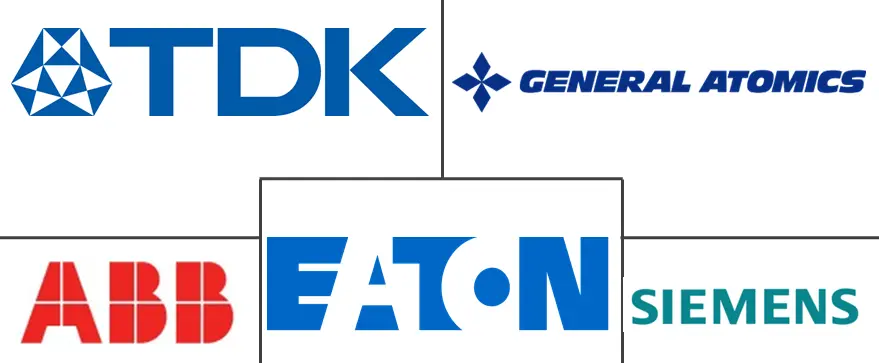Market Size of HVDC Capacitor Industry

| Study Period | 2019 - 2029 |
| Base Year For Estimation | 2023 |
| CAGR | 15.80 % |
| Fastest Growing Market | Asia Pacific |
| Largest Market | North America |
| Market Concentration | Low |
Major Players
*Disclaimer: Major Players sorted in no particular order |
Need a report that reflects how COVID-19 has impacted this market and its growth?
HVDC Capacitor Market Analysis
The High Voltage Direct Current (HVDC) Capacitor Market registered a CAGR of 15.8% over the forecast period 2021 to 2026. HVDC capacitor technology offers extremely rapid stability control, power flow control, and the ability to segment parts of the power system, all of which enhance the grid's flexibility, reliability, and resilience. This technological superiority makes them a better choice and augments the demand in the market.
- The increasing demand for reducing energy losses in power transmission and distribution, increasing utilization of renewable energy, and growing demand for solar inverters and industrial inverters are some of the major factors driving the adoption of HVDC capacitors.
- These capacitors are designed to be used in applications where high current pulses are produced, like in HVDC transmission systems. Moreover, an increased focus of utilities to avoid overload conditions, enhancing power flow between parallel lines, and the need for improving the system's stability will further increase the adoption of power capacitors in HVDC transmission systems. Further owing to recent technological developments and demand for uninterrupted power, HVDC systems are also increasing adoption in industries such as data centers, and electric vehicles.
- Many governments worldwide are investing significantly to achieve renewable energy as the primary source of energy for their region. Recent projections published by EIA also indicates that renewable sources will be primarily used for electricity generation. All of these factors will result in the implementation of multiple transmission systems. HVDC capacitors are finding applications in power transmission for connecting users with renewable energy sources, such as remote solar power generation plants and offshore wind turbines. Therefore, growth in renewable energy sources will also create massive opportunities for studied market vendors
- HVDC capacitors are also finding applications due to growing power loss concerns. Fluctuation in demand and inefficient transmission and distribution infrastructure are some of the primary reasons for these power losses. In emerging countries, the power losses are much higher. Therefore, HVDC capacitors manufacturers have more opportunities in these regions. For instance, In India, the recent COVID-19 led lockdown has also made a loss of INR 50,000 crore to the country's power companies
- However, market growth may be limited due to encroachment, but it may remain a multi-billion market. The strategy of vendors in the western hemisphere is to increase the share of this valuable product line through acquisition, as other vendors look at tantalum type as a liability. Tantalum remains an opportunity for those who better understand the nature of challenges in global markets.
- The spread of the COVID-19 has affected, and continues to affect, the passive electronic components industry through decreases in operation levels of the supply chain's top component and raw material production facilities suppliers, and through a fall in sales in the global market in a range of regions and countries. This has caused many market vendors to revised their forecasts of global revenues and volume shipments.
